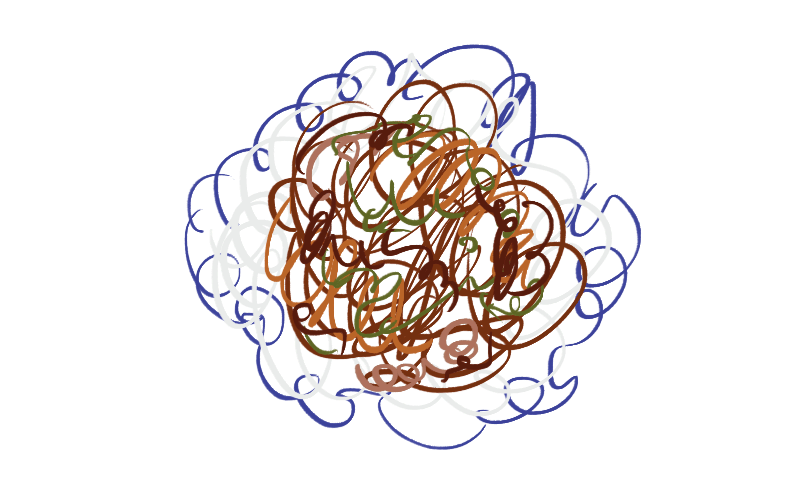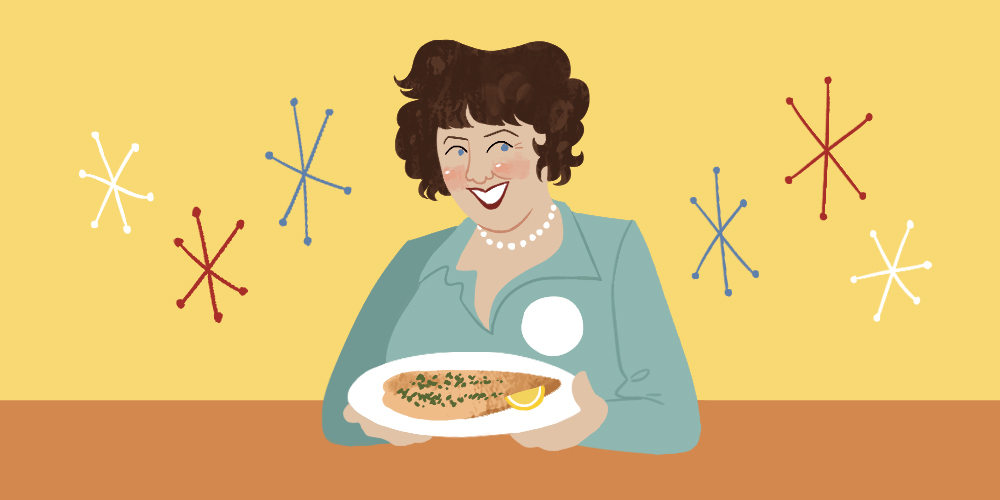For two streaming seasons at HBO, the vividly colorful life, innovative culinary skills and cultural change-making of the late Julia Child (1912-2004) have been on display for all to enjoy as much as they would a fine bouillabaisse or cassoulet. As an American-born chef and author who taught the world an approachable way into worldly haute cuisine with cookbooks such as her 1961 debut, Mastering the Art of French Cooking, and television programs such as 1963’s The French Chef, Child introduced what it meant — for those who cooked, for those who supped — that they could exist within the intersection of fine Parisienne dining and hearty down-home meals. And, as she wrote in her final book, My Life in France, “that the pleasures of the table, and of life, are infinite.”
Diners and home chefs in America, now, will confirm that, in many cases, their first French culinary experiences came courtesy of Julia Child’s books and/or her regular television appearances, and that the mood and ease of craft that she maintained throughout the process made a future of fanciful cuisine appear possible and plausible.
While Julia Child demystified French cuisine and turned its most exotic qualities into something homespun, her lessons were revolutionary to the women of the 1960s. Child made the intricacies of planning and cooking a nightly meal for a family pleasurable and adventuresome in the pre-Feminist Movement. She pushed women to be seen, and made what was once a chore into an art form.
By the 1970s, following the publication of Mastering the Art of French Cooking, Volume Two, and her next television program, Julia Child & Company, the goodwill that came from her once-unedited approachability as a Saint of the Everyday, and a hero to housewives everywhere, truly began to radiate outwards.
Yes, Child continued to, in her words, “take the bugaboo out of French cooking” for the newly liberated masses of women who no longer wanted to be tied to the kitchen. But Child also reached deeper into the chef profession, winning over many who saw in “the French chef” another brand of liberation.
The once-foreign language of French food, post-Child, was suddenly approachable, especially as her earliest television showcases were raw, unedited and featured blunders along with its their triumphs. Authenticity and accessibility became Child’s calling card along with her signature high-pitched musical accent.
One great early example of Child’s reach came when Lyon-born George Perrier emigrated to the United States and opened his famed Le Bec-Fin in Philadelphia in 1970. Demystifying French cuisine beyond mere fancy (and fancy dining) surely held appeal to someone like Perrier who settled in the blue-collar city rather than the tony culinary centers of the United States such as New York City or Hollywood when he left his native France. If the gritty City of Brotherly Love could take to French specialties such as gigot farci and spinach soufflé, any working-class hamlet could.
From there, some of Philly’s finest, young French-inspired chefs have opened their own magnificent local restaurants after working for Perrier – Nick Elmi, Joey Baldino, Jesse Prawlucki, Pierre Calmels and many more – and they continue to transform Philadelphia into a towering, sophisticated dining destination.
Now more than 50 years later, contemporary culinary prodigies of Julia Child — three nationally-known and decorated gastronomic artists working through the oils and watercolors that is French cooking — have modernized Philadelphia’s French food scene, given Americans a better understanding of the cuisine and cooking techniques, and had much to say about their perceived, spiritual mentor.
Chef Townsend Wentz, a master of French cuisine and the owner of the casual dining Townsend EPX among other restaurant spaces, states that Julia Child’s influence on dining in America — French and beyond — cannot be overstated.
“She was the first to bring French cuisine into American homes; her show was like watching a combination instructional video, history lesson, and comedy routine rolled into one,” says Wentz on the eve of opening yet another new restaurant, Oltramare. “My mother’s well-used copy of Mastering the Art of French Cooking was the source of many meals growing up, utilizing the haul from our backyard garden. A never-ending parade of various pies, cakes, egg dishes and stews, all from Julia’s repertoire, made my childhood seem almost decadent now. What was once the definitive French instructional, is now the framework for most of what we call ‘American Cuisine’. Yes, the ingredients are not quite the same with our regional variations, but when stripped down to individual techniques, this book provided the HOW and WHY of cooking.”
Wentz went on to say that understanding the lot of culinary concepts in Mastering the Art of French Cooking is a fantastic base for anyone looking to improve their skills in the kitchen, and that the complex French dishes in Child’s first cookbook can be boiled down to one over-arching concept. “If you master each individual technique, complex dishes become a series of simple techniques done correctly, in the right order,” states Wentz. “Building these skills will give you the ability to be creative, riff on recipes, and pull off making a delicious meal from what seems to be nothing. And this is the key to becoming a good chef.”
Cookbook author and culinary historian Grace Young, the winner of a 2011 James Beard Award, told a story to the Beard Foundation about growing up with Child and her illuminating culinary verse — especially when it came to the then-rarity of French food beyond Parisian chefs.
“I was completely mesmerized. I had never seen anyone like Julia Child before. She was so funny and genuine and authentic, and the food that she cooked was completely different than the Cantonese food that I had grown up eating . . . I wanted to do what Julia had done for French food — learn French cooking in France and translate it for an American audience. I learned Chinese cooking from my parents and want to demystify it for cooks who are unfamiliar with Chinese cuisine.”
Like Julia Child, Philadelphia Chef Peter Woolsey attended the Paris location of Le Cordon Bleu, the legendary culinary educational institution geared toward refining one’s learning of French cuisine. Since graduation, Woolsey has opened French-focused restaurants such as the still-going white linen Bistrot La Minette and casual locations such as Gabi and La Peg. Beyond Child, however, Woolsey considers his greatest culinary influence to be his Burgundy-born wife and her family.
“My goal as to what I do professionally is making soul food that no one has had before,” notes Woolsey. “Julia Child’s cooking, itself, does not translate to restaurant situations very well, especially when we take into account how restaurant dishes are cooked quickly and reheated quickly. Yet, how I cook at home is very relatable to Child’s stuff. As a young guy, I can remember doing her Coq au Vin for the first time. Then again, I married into a family based in Burgundy, and my mother-in-law’s version of Coq au Vin has informed me even more.”
Speaking pragmatically, Woolsey says that most of what Child did wasn’t so much about changing the language of French food, but rather, translating it for Americans.

“Julia Child was responsible for taking the things that were most complicated and putting them into a language that was available for everyone,” says Woolsey. “Before her, within the context of French culture, everything was a given — the manner of cooking was just how it was done in France, and not for Americans. Julia Child was good at taking all those little French things and revealing how they worked to Americans.”
Stating how French cookbooks before Child were very “non-specific” (e.g. “to truss a chicken”), Mastering the Art of French Cooking was more completist and revelatory, “an encyclopedic reference manual … a way of translating what she learned in France and relaying that to American audiences. Even down to imperial units, she tirelessly wrote down everything according to cup measurements and such.”
Chef Christopher Kearse lives for two things: gastronomical innovation and elevating French cuisine through those advancements. At his famed Philadelphia restaurant Forsythia, with a hashtag that reads “#phillyfrench,” the chef-proprietor plies his trade in honor of all-things Julia Child.
“Forsythia did a whole 5-course menu tasting last summer for her birthday from omelets, fish quenelles to clafoutis — a quick date night dessert if you need something to impress a date,” says Chef Kearse.
“From my earliest days as a chef, on the wall of my last establishment Will BYOB, we had a sign featuring one of her quotes: ‘Find something you’re passionate about and keep tremendously interested in it,” recalls Kearse fondly.
“I remember when I first read those words, and it hit me with exactly what I felt – but didn’t ever put into words — about cooking, cuisine, hospitality and the restaurant industry as a whole. I use this quote to this day as it hangs in my office. I feel as if Child is responsible for breaking down the walls of French food, liberating it from the stigma of being hard and unapproachable to cook.”
Bringing Child’s printed words and earliest filmed original Kinescope series into the modern day, Kearse says that, along with heeding the words of her beloved quote, that all of he asks that all of his cooks watch videos of her doing omelets before they work at their station. “Her videos are the root of it all, so technique-driven, which is something love,” he says, happily. “All of her these basic French recipes are things that I have done in bistros to 3-Michelin star places. I truly believe that Julia Child helped to get America to see the light, to see what French food is all about and what there is to love.”•




